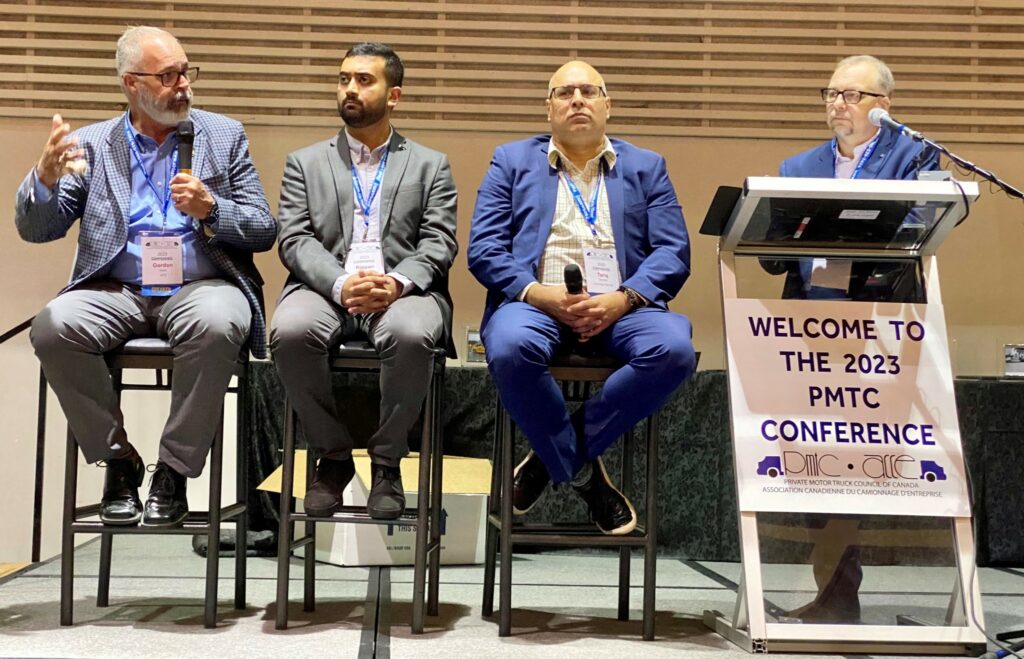Research, data pave the way for fleet decarbonization
If fleet decarbonization is on the radar, research and crunching numbers with present-day equipment will provide insight into a carrier’s route toward its goal.
The first step in planning and deploying renewable natural gas (RNG), hydrogen and electrification in a fleet is to conduct market research into commercial vehicle-viable technologies specific to duty cases.
Carriers must utilize vehicle telematics to see the impact on operations to study viability, Rippan Bhattacharjee from GHD told attendees at the Private Motor Truck Council of Canada’s conference in Hamilton, Ont.

Accessing the lifecycle cost of existing vehicles will provide a dollar figure for carriers to produce a fleet development plan pushing toward low- or zero-emission equipment, Bhattacharjee added.
The industry challenge is to decarbonize the Trans-Canada Highway, said Tariq Qurashi from Enbridge Gas. “Energy is fungible,” he said during a panel discussion, adding that compressed natural gas (CNG) stations are cropping up and RNG production is increasing. He said the goal is to help get energy into the North American gas grid.
Panel moderator Bruce Winchester from CVGVA urged a data-driven approach to begin the journey, transitioning a fleet from today over a period of time.
Lower maintenance costs
Gordon Reed from UPS, offering a carrier’s perspective, said low- and zero-emission equipment ticks multiple boxes. Besides lower greenhouse gas emissions, which is the primary reason for vehicle acquisition, maintenance costs are significantly lower than diesel, and equipment lasts longer.
UPS aims to be carbon-neutral by 2050, Reed said. By 2025, the company aims to use 40% alternative fuel vehicles. Presently, the number sits at 38%. Down the road by 2035, it aims to use 30% sustainable aviation fuel in its air network along with 50% reduction in carbon dioxide emissions. UPS has begun using two electric yard shifters in its Caledon, Ont., hub.
Challenges
The fleet decarbonization journey has many challenges, Bhattacharjee acknowledged.
The biggest hurdle is financial, and government grants and subsidies help ease the burden. He said the battery and hydrogen technology is unrealistic at its current state for Class 8 longhaul trucks.
“We are hedging risks,” Bhattacharjee said, adding that interim solutions provide space for CNG, RNG or hydrogen offering a low-emission option.
Another big capital investment is infrastructure along with operations that open the door for change management, he said. Bhattacharjee added that carriers must hedge their energy risks by taking the long-term view.
As with diesel, he said CNG, hydrogen and electricity are susceptible to external factors. A secure and reliable energy source is essential.
Have your say
This is a moderated forum. Comments will no longer be published unless they are accompanied by a first and last name and a verifiable email address. (Today's Trucking will not publish or share the email address.) Profane language and content deemed to be libelous, racist, or threatening in nature will not be published under any circumstances.